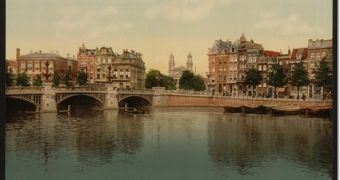It is a well-known fact that Amsterdam, the capital of the Netherlands, has a rather peculiar urban geography, meaning that it hosts countless canals and about 1,500 bridges that help local people and tourists “navigate” their way around the city.
Therefore, it shouldn't surprise us that, given the international energy crisis, the citizens of Amsterdam have seriously taken into consideration the possibility of using all the water they have laying around so as to set in motion a hydroelectric power station.
What is interesting is that they seem to have taken things one step further: their plan is to build a bridge over the Amstel river, and make it double as a hydroelectric plant.
First presented at the Amsterdam Iconic Pedestrian Bridge Competition, whose latest edition ended this March, this very ingenious concept doesn't seem to be a very complicated one after all.
Thus, the Turbine Bridge is to resemble the hull of a ship, with recreational spots and pedestrian pathways up on deck, and turbine engines and plant rooms down below.
Naturally, some might think about traditional hydroelectric power stations and argue that the noise made by the water when going through the turbines might be a bit too much for the people of Amsterdam to handle, and that it would be impossible to sit down and grab a cup of coffee on top of the plant's roaring engines.
However, it seems that the people who came up with this project have really taken the time to think things through, and that ways have been found to allow the water to go back into the river after it passes the turbines without making not even so much as a splash.
As earthtechling.com informs us, the Turbine Bridge is to expected to produce enough energy to meet the demands of the surrounding community.
From where we stand, the idea of having a hybrid bridge-hydroelectric power station in the very heart of a city shows that urban architecture can be designed so as to please both the eye and the more pragmatical needs of local people. Therefore, we hope that work on this project will begin as soon as possible.

 14 DAY TRIAL //
14 DAY TRIAL //